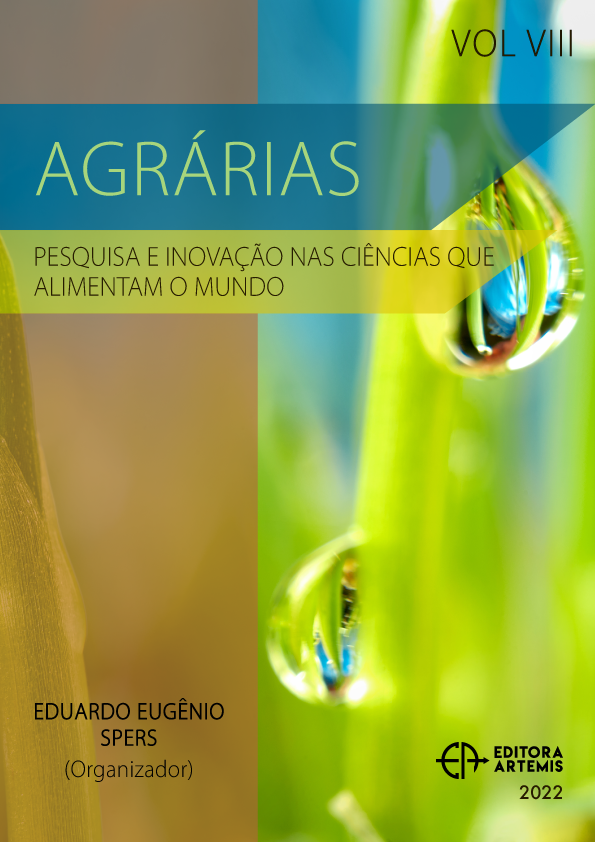
CONCEPTO DE BIORREFINERÍA: DESARROLLO SOSTENIBLE Y PROPUESTA DE PROCESO LIMPIO EN LA EXTRACCIÓN DE COMPUESTOS FENÓLICOS DE RESIDUOS INDUSTRIALES DE PISTACHO (Pistacia vera var. Kerman)
El procesamiento industrial del pistacho genera biorresiduos que pueden ser reutilizados como precursores de componentes bioactivos de interés como los compuestos fenólicos (CF). Por ello, el objetivo de este trabajo es optimizar las condiciones de extracción por agitación (EAM) y de extracción asistida por ultrasonidos (EAU) de CF utilizando la metodología de superficie de respuesta (MSR). Se utilizó un diseño central compuesto (DCC) para analizar los efectos de las variables independientes: relación etanol: agua (E-A) y tiempo de extracción. Además, se evaluaron diferentes alternativas del proceso de extracción mediante un análisis exergético. Se calcularon los consumos de energía y agua, las emisiones de CO2 y el rendimiento exergético. Las condiciones óptimas para la extracción de CF mediante el método EAU fueron la E-A de 0,5 y un tiempo de extracción de 0,7 y 0,94 h. Para EAM, las condiciones óptimas fueron una la E-A de 0,6 y un tiempo de extracción de 2 y 2,7 h. Un periodo de extracción más largo, para ambas extracciones, produce reacciones de degradación y, por tanto, una pérdida de actividad de captura de radicales. EAM tuvo valores óptimos de E-A comparables a los correspondientes a EAU. Sin embargo, EAM requiere más tiempo para producir ruptura en la célula, disolución y difusión de los compuestos bioactivos en los extractos. De los resultados de la simulación, se encontró, que el uso de reciclo es conveniente ya que, la exergía de las corrientes no se desperdicia al verterlas al medioambiente. El consumo de energía para la alternativa recomendada, y que usa una relación de E-A 1/1 que incluye el reciclo de solventes, (E-W 1/1 Rec) fue de 567 MJ/h y su emisión de CO2 fue de 105 kg/h. La destrucción de exergía indica que las etapas de evaporación y destilación pueden optimizarse hacia una operación más sostenible.
CONCEPTO DE BIORREFINERÍA: DESARROLLO SOSTENIBLE Y PROPUESTA DE PROCESO LIMPIO EN LA EXTRACCIÓN DE COMPUESTOS FENÓLICOS DE RESIDUOS INDUSTRIALES DE PISTACHO (Pistacia vera var. Kerman)
-
DOI: 10.37572/EdArt_2608226826
-
Palavras-chave: Extracción de compuestos fenólicos, simulación numérica, optimización de extracción, residuos industriales de pistacho, análisis exergético
-
Keywords: Extraction of phenolic compounds, numerical simulation, extraction optimization, industrial pistachio biowaste, exergy analysis.
-
Abstract:
Industrial pistachio processing generates biowaste that can be reused as precursors of bioactive compounds of interest such as phenolic compounds (PC). Therefore, the aim of this work is to optimize the conditions of stirred extraction (SSE) and ultrasound-assisted extraction (UAE) of PCs using the response surface methodology (RSM). A central composite design (CCD) was used to analyze the effects of the independent variables: ethanol: water (E-A) ratio and extraction time. In addition, different alternatives of the extraction process were evaluated by means of an exergy analysis. Energy and water consumption, CO2 emissions and exergetic efficiency were calculated. The optimum conditions for CF extraction by the EAU method were E-A of 0.5 and an extraction time of 0.7 and 0.94 h. For EAM, the optimum conditions were an E-A of 0.6 and an extraction time of 2 and 2.7 h. A longer extraction period, for both extractions, results in degradation reactions and thus a loss of radical scavenging activity. EAM had optimal E-A values comparable to those corresponding to EAU. However, EAM requires more time to produce cell rupture, dissolution and diffusion of the bioactive compounds in the extracts. From the simulation results, it was found that the use of recirculation is convenient since the exergy of the streams is not wasted by discharging them into the environment. The energy consumption for the recommended alternative, which uses an E-A 1/1 ratio including solvent recycling (E-W 1/1 Rec), was 567 MJ/h and its CO2 emission was 105 kg/h. The exergy destruction indicates that the evaporation and distillation stages can be optimized towards a more sustainable operation.
-
Número de páginas: 15
- Daniela Inés Zalazar
- Rosa Rodriguez
- Paula Fabani
- Germán Mazza
- Marcelo Echegaray
- Romina Zabaleta
- Eliana Sánchez
- Erick Torres

